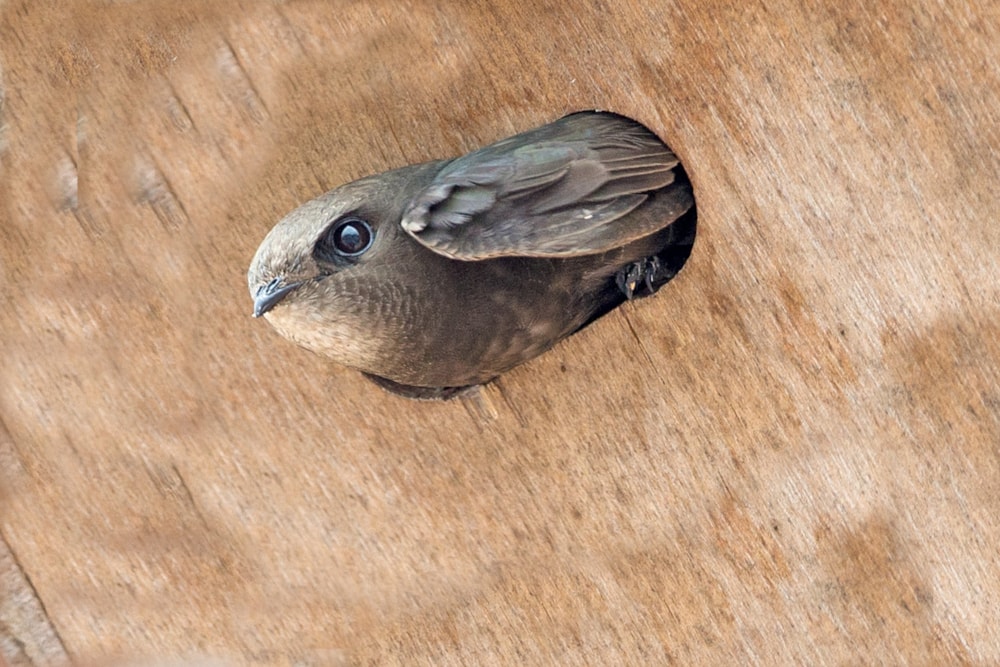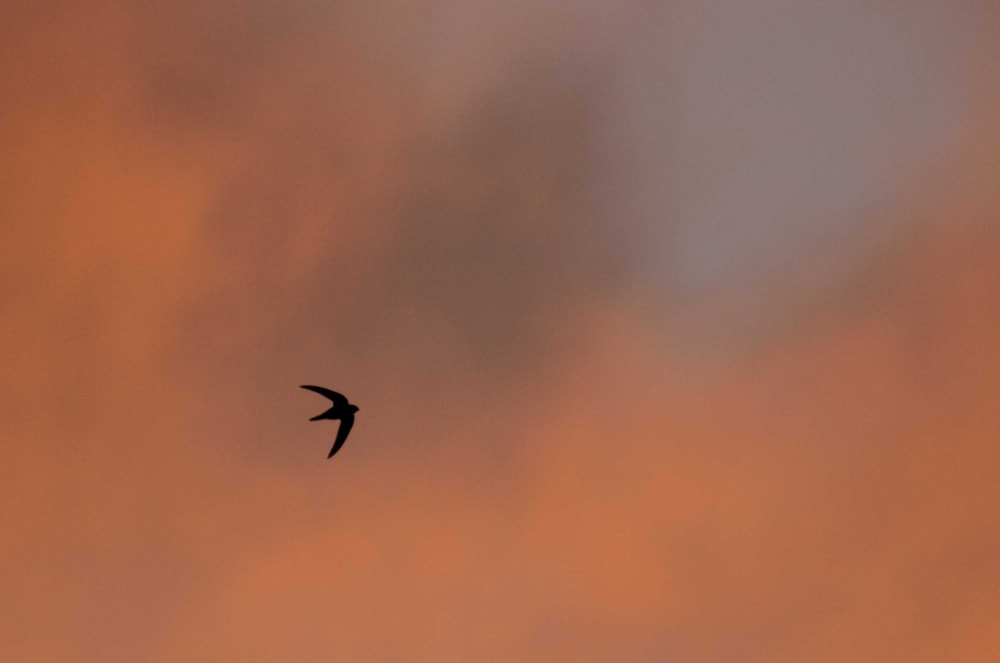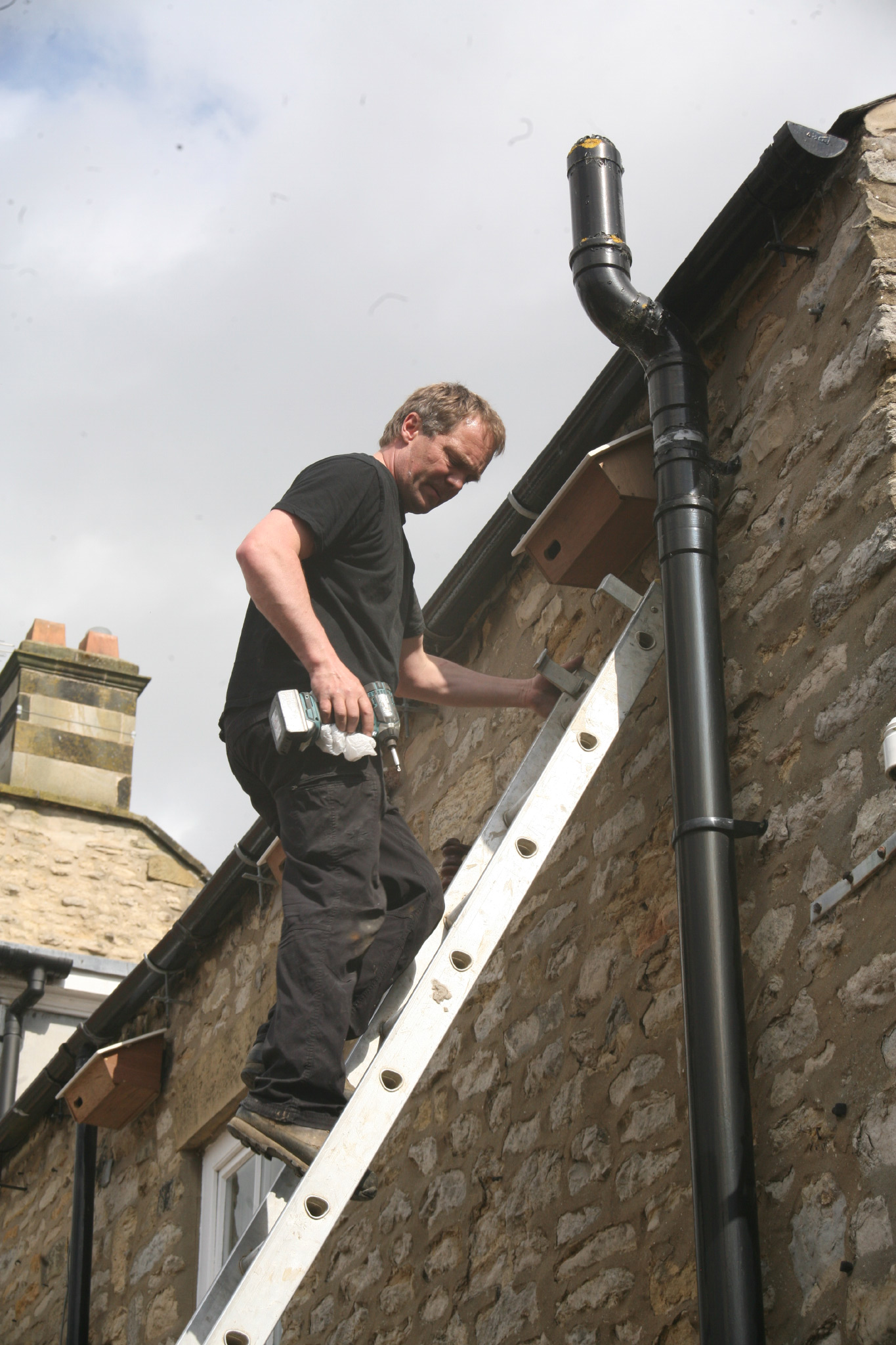North Yorkshire town becomes swift friendly
A number of nestboxes have been put up in Helmsley, North Yorkshire, as the town makes a concerted effort to boost its breeding Common Swift population, ahead of the species' return from its wintering grounds in Africa.
Four boxes have been attached to the rear of Claridges Book Shop on Church Street. Others are being erected at the North York Moors National Park Authority offices on Bondgate, Porters Coffee Shop and on private homes in Castlegate.
The project is being run by an organisation called Helmsley Swifts, which aims to educate people about Common Swifts and ensure that existing nest sites are retained. Many suitable sites have been lost from towns across Britain in recent years, as roofs have been replaced and improved, with the gaps and holes in eaves, which Common Swifts exploit for nesting, having been blocked up.

Common Swifts routinely take to using specially provided nestboxes, and all homeowners are encouraged to give it a try (Simon Richardson).
The main arrival of Common Swifts in North Yorkshire takes place in early to mid-May, as the birds get ready to breed. The boxes will allow breeding swifts to nest safely, laying their clutch of two to three eggs at the end of May or early June, which they incubate for around 20 days. At the end of the month they will be joined by younger, non-breeding birds, which spend time investigating potential breeding sites for future years – but never land. Swifts only land to nest and they are supremely adapted for life 'on the wing', feeding, drinking, bathing and even sleeping in the air.
Jonathan Pomroy, a wildlife and landscape artist who started the Helmsley Swifts project with Ian Kibble, commented: "Stand in Helmsley on a warm evening in July and you may see flocks spiralling higher and higher until they are out of sight, screaming as they go. We think that they roost at between 1,000 and 3,000 metres and alternate wing-beats with brief gliding periods facing into wind, which gives them lift. How they remain orientated to descend back to the same location at dawn is a mystery."

At dusk, it's possible to watch Common Swifts noisily ascending to a great height as they prepare to roost on the wing (Harry Read).
Pomroy continued: "Swifts pair for life and are the most affectionate of birds in the nestboxes, constantly preening each other and snuggling up tight. Many nests in Helmsley are located under pan tiles in the loft space and consist of material gathered entirely on the wing: feathers, bud cases and pieces of grass or straw blown into the air. To make life a bit easier for them we put some downy feathers in the nestboxes before they are put in place. These materials are glued together with saliva.
"When the nestlings hatch, it takes about six weeks before they are ready to make their vital first flight from the nest in late July or early August. They spend periods of time exercising their wings a few days before fledging, flapping furiously or sometimes doing press-ups with their wings to build up strength. They fledge, often just before dark, and from this moment on they fend for themselves on their journey to the Congo area of Africa."
Helmsley Swifts is applying for grants to buy more boxes and electronic swift calls to attract the birds to the new boxes. As part of UK Swift Awareness Week, there will also be a Midsummer Swift Eve event on 21 June at All Saints Church in Helmsley. The evening starts at 7.30 pm, with a short presentation followed by a walk around the town to look at the swifts in their new homes, along with Swallows and House Martins. The event is free and suitable for all ages.
For more information about what's happening in Helmsley, head to www.visithelmsley.co.uk or follow the town on Facebook (www.facebook.com/visithelmsley) or Twitter (@visithelmsley).

Charlie Heap of the National Centre for Birds of Prey installs some of the first swift boxes in Helmsley.

